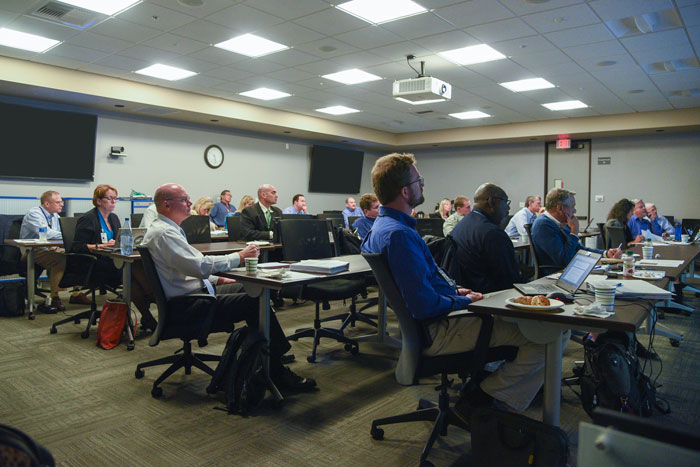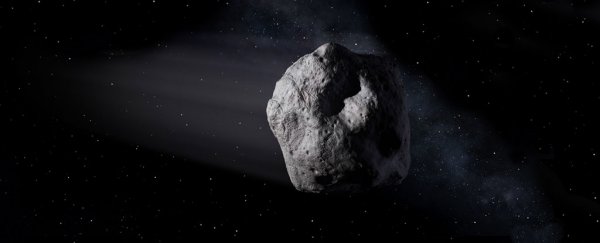In sci-fi movies like Armageddon, if Earth is threatened by an incoming and potentially planet-destroying asteroid, you send a team of mouthy drillers led by Bruce Willis to nip that space rock in the bud.
But that kind of off-world response isn't always going to be possible, as teams in a NASA asteroid emergency simulation found out recently. In the simulation, participants found it was too late to divert or destroy the asteroid, meaning they were forced to look to other desperate solutions.
The exercise is the third in a series run by NASA and the Federal Emergency Management Agency (FEMA) – along with participants from the US Department of Energy and Air Force and Californian emergency services.
The purpose of the simulation is to give these departments a chance to perform a 'dry run' of how they would respond if we detected an asteroid on an actual collision course with Earth – as opposed to the flybys that we usually experience.
"These exercises are invaluable for those of us in the asteroid science community responsible for engaging with FEMA on this natural hazard," said NASA Planetary Defence Officer Lindley Johnson.
"We receive valuable feedback from emergency managers at these exercises about what information is critical for their decision making, and we take that into account when we exercise how we would provide information to FEMA about a predicted impact."
While NASA says the chances of an asteroid striking Earth are extremely unlikely, the hypothetical possibility of such an event is nonetheless real.
The space agency's Centre for Near-Earth Object Studies (CNEOS) is aware of 659 near-Earth objects, all of which have at least a slim impact probability in the next 100 years or so.
"[N]one pose a significant threat over the next century, either because the probabilities are extraordinarily small, or the asteroids themselves are extremely small," CNEOS manager Paul Chodas told Christopher Mele at The New York Times.
"Nevertheless, we must continue searching for asteroids in case there is one that is heading our way."
With that hypothetical possibility in mind, simulation participants were asked to contemplate a nightmarish but fictitious scenario: in four years' time, a large asteroid has a 2 percent chance of colliding with Earth.
While 2 percent might seem slim, it's definitely too big a possibility to not do anything about – especially if there's a chance the probability of impact might increase as the asteroid nears Earth.
 Emergency managers from NASA, FEMA, and other agencies during the simulation. Credit: The Aerospace Corporation
Emergency managers from NASA, FEMA, and other agencies during the simulation. Credit: The Aerospace Corporation
With an estimated impact date of 20 September 2020, this space rock is thought to measure between 100 and 250 metres (around 300 to 800 feet), and is projected – if it were to hit Earth – to make impact along a long stretch of the planet, including a narrow band that crosses the entire US.
Although the scenario might seem grim, at least the participants got a significant (four-year) window to plan their response. In reality, we often unexpectedly discover asteroids just days out from when they pass closely by Earth.
In previous NASA/FESA simulations, "deflection missions" like the one in Armageddon were an option on the table. Not so this time, because of the relatively short four-year timeframe.
As Chodas explains, it would take up to two years to build the spacecraft needed to do the job, and then perhaps another year for it to travel to the asteroid. Obviously that wouldn't leave enough time to safely divert or destroy the rock.
And the scenario gets worse. While humanity observes the incoming asteroid, the probability of the impact climbs sharply to 65 percent after three months, then jumps to a predicted 100 percent likelihood four months later in May 2017.
As the impact probability rises, the predicted site of impact gets narrower, with observers concluding that the now-definite strike will hit Earth across Southern California or just off the coast in the Pacific Ocean.
With that in mind, the simulation participants were asked to coordinate emergency measures to control what they could, given that they now knew the asteroid was on a confirmed collision course.
This included modelling the predicted impact's footprint and estimating the potential displacement of populations in affected areas, along with collection information on what kinds of infrastructure would be affected by the asteroid.
The teams also had to manage how people might actually react to the news of an impending asteroid strike, figuring out the best ways to provide accurate and useful information to the public, while clamping down on rumours, false information, and fear-mongering.
According to Chodas, even if the asteroid were to touch down in the Pacific Ocean and not directly on an urban centre like Los Angeles, the consequences would be massive.
"If the asteroid struck off the coast, with these size parameters there'd be a small tsunami depending how far off the coast it impacts," he told Daniel Oberhaus at Motherboard.
"It would not be like in the movies, it would be small: probably 2–3 foot (0.6–0.9 metre) tsunami by the time it reached the coast. There would be inundation which would cause infrastructure damage."
But things would be significantly hairier if the asteroid made it all the way to sunny California.
"The air burst is the main hazard if it hit anywhere near land, which in this case would be equivalent to a 50-megaton explosion which would cause a large shock wave," Chodas said. "It would be devastating for a region with a 40–50 kilometre (25–31 mile) radius around the impact point."
NASA and FEMA haven't let slip on how the participants in the simulation actually fared under these trying circumstances – but given the hypothetical risk of this really happening, any practice in how to deal with such an emergency would be invaluable for the government teams involved.
Especially since, in the long term, NASA says such a predicament becomes an ever more likely prospect.
"It's not a matter of if – but when – we will deal with such a situation," said associate administrator for NASA's Science Mission Directorate Thomas Zurbuchen in a press release.
"But unlike any other time in our history, we now have the ability to respond to an impact threat through continued observations, predictions, response planning and mitigation."
